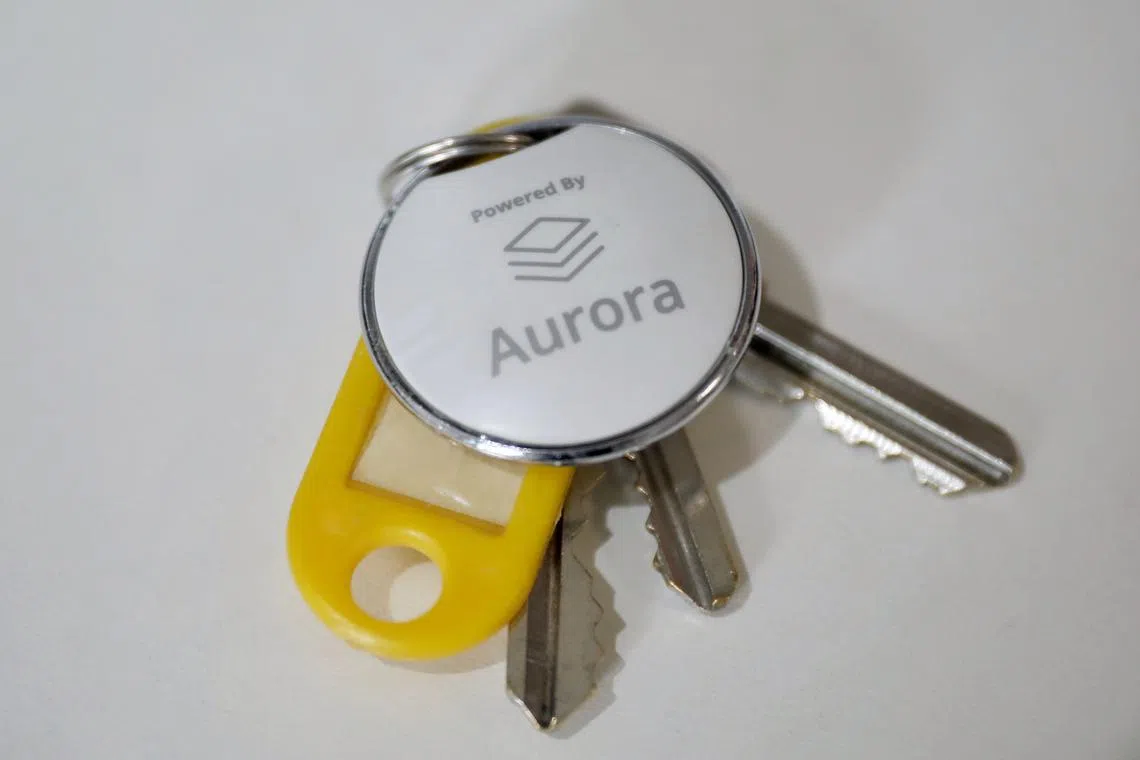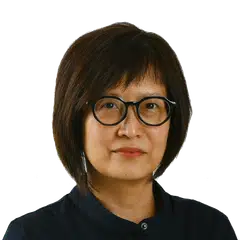Smart sensors used in study to detect cognitive decline in seniors who live alone
Sign up now: Get ST's newsletters delivered to your inbox

The sensors were installed at Ms Julie Chia's home in April 2021.
ST PHOTO: TARYN NG
Follow topic:
SINGAPORE – Ms Julie Chia lives alone in a flat in Tampines and keeps herself active despite her advanced age.
The 97-year-old feels secure each time she heads out, whether it is to the Lions Befrienders (LB) Active Ageing Centre at her void deck to play Rummy-O with her friends or nearby to buy the newspaper and her dinner.
The sprightly woman is among more than 200 seniors living alone who have been recruited since 2020 for a longitudinal study looking into using smart sensor technology to detect mild cognitive impairment (MCI) – a condition that increases one’s risk of developing dementia – in order to respond to it early. This will help seniors to age better and remain for longer in the community.
“With this (beacon sensor) on my keychain, I know that whenever I go out, someone knows. I feel more relieved,” said Ms Chia.
What the researchers have gathered from the second phase of the study, with sensor data collected from 63 seniors living alone, is that the machine learning-based prediction technology is able to detect MCI at a 90 per cent accuracy rate.
This is an improvement from the previous performance of 70 per cent obtained in the first phase of the study in 2020.
The data for the study is generated by eight sensors placed in different parts of the participants’ homes, such as the living room, under the mattress, inside their medicine box or cabinet, and on the door.
A sensor resembling a tag is also attached to their keychain to help track whether the senior participants have their keys with them when they go out.
Additionally, the seniors are given a wearable device to measure their daily steps and heart rate.
In Ms Chia’s case, the sensors were installed at her home in April 2021.
Unlike a traditional video surveillance system that captures images and voices, the sensors monitor movement and daily routines discreetly, including sleep patterns, physical activity and memory lapses.
They also track how often the senior moves around the flat or goes out and for how long, how well he or she sleeps, or the frequency of forgetting personal items, particularly their medications.

A sensor resembling a tag is also attached to their keychain to help track whether the senior participants have their keys with them when they go out.
ST PHOTO: TARYN NG
The longitudinal study, called Sensors In-home for Elder Wellbeing, is led by Associate Professor Iris Rawtaer, head and senior consultant at the department of psychiatry and director of research at Sengkang General Hospital, and professor of computer science Tan Ah Hwee from Singapore Management University.
It is estimated that there will be 152,000 individuals living with dementia in Singapore by 2030, and 187,000 by 2050. While global study statistics vary, up to half of all people with MCI go on to develop dementia within five years, said Prof Rawtaer.
In 2024, the Lancet Commission on dementia prevention, intervention and care found that 45 per cent of cases of dementia could potentially be delayed by addressing some of the modifiable risk factors, such as social isolation, untreated vision loss and high low-density lipoprotein cholesterol, commonly known as bad cholesterol.
However, many people are not even aware of experiencing MCI, the at-risk state for dementia. They seek help only after significant cognitive decline has occurred, missing the crucial window for intervention and advanced planning, said Prof Rawtaer.
This is where the sensor system can help.
“Nine out of 10 times, it essentially outperforms your pen and paper routine screening instruments like your MMSE (Mini-Mental State Examination) and your Moca (Montreal Cognitive Assessment),” Prof Rawtaer told The Straits Times.
MMSE and Moca are brief screening tools used to assess cognitive function and detect MCI as well as mild dementia. The participants in the study go through detailed neurocognitive assessments yearly, providing the benchmark against which the machine learning models in the sensor system are tested.
“The question is whether seniors can accept the use of the sensor system. Is this intrusive? Is this inconvenient? Is this going to be something that we can scale and do in the long term in the community?” Prof Rawtaer said.
Ms Chia, for instance, did not have her wearable device – a study requirement – on her on the day of the interview. A spokesman for LB, who was with her that day, said the seniors may forget to charge their wearable device.
Prof Tan said that for the second phase of the study, the team developed an advanced machine learning-based artificial intelligence (AI) model to handle irrelevant or missing sensor data due to hardware failure, for instance.
The AI can also explain why it flagged someone as being at risk, he said. As an example, it has learnt that people with MCI often move around less while at home and are more likely to forget to take their medication.
“At SMU, we have one data engineer and two data analysts looking at the data. Moving forward, we are thinking that we should partner with a commercial party... to be able to do this in a viable manner. It’s not just the installation of the equipment but the maintenance and the day-to-day monitoring,” he said.
The total installation cost of the sensor system is below $1,000.
In the third planned phase of the study – for which the researchers are awaiting funding – they will test the sensors in multi-person households, and look at new digital biomarkers and how to reduce the numbers of sensors used to make the monitoring system more efficient and affordable.
Beyond cognitive assessment, the smart sensor system could be expanded to support safety monitoring and health assessment, the researchers said.
LB’s executive director Karen Wee said the smart sensor system has a lot of potential not just in helping seniors to age well in the community, but also in enabling providers like it to better support the seniors.
“Wearables may not be something that the seniors of today are keen on, but who is to say that in 10 years’ time they will not be widespread,” she said.


